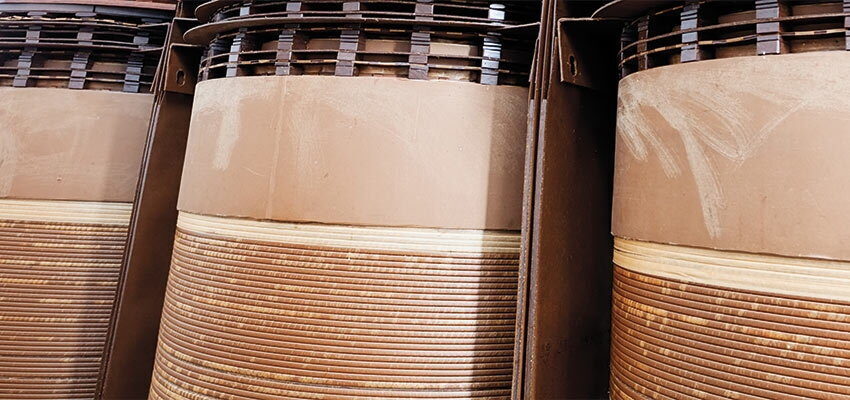
Estimation of water content in oil-impregnated cellulose materials in transformers
Abstract Oil-impregnated cellulose materials are used in oil-filled transformers. Water in insulation has a negative effect on electrical, mechanical and chemical properties of insulating materials....
byAnatoly SHKOLNIK

Abstract
Oil-impregnated cellulose materials are used in oil-filled transformers. Water in insulation has a negative effect on electrical, mechanical and chemical properties of insulating materials. Since taking insulation samples from the transformer is no easy task, laboratory testing to estimate water content in insulation is conducted with a measurement instrument that is based on a known indirect method. This paper describes the possibility to estimate water content in oil-impregnated cellulose insulation on the basis of results of the measured relative humidity of the oil in the transformer.
Keywords: oil-filled transformer, oil-impregnated cellulose insulation, water content in oil and cellulose insulation
- Introduction
Oil-impregnated cellulose insulation (CI) is widely used in oil-filled transformers. However, the water content in this insulation can have a negative impact on electrical, mechanical and chemical properties of the insulating materials. While direct methods can be used to estimate the water content in the oil (Wo), the estimation of the water content in the oil-impregnated cellulose insulation (Wp) is typically carried out by indirect methods. The relationship between the water in the oil and the water in the cellulose materials makes it possible to estimate the water content in the insulation by measuring the relative humidity (RH) of the oil at fixed temperatures.
- The relationship between the water in the air and the water in the cellulose insulation
The wood consists of cellular tissue which is up to 85% alpha cellulose (C6H10O5)n, and it is the raw material generally used for the fabrication of insulation materials such as paper and pressboard.
The elementary chains in the cellulose polymer consist of glucose rings. The degree of polymerization (DP) is a parameter describing the average number of glucose rings in the cellulose macromolecules that form the fibre. For a new CI, the DP is 1100-1350 [1].
The hydroxyl groups in the glucose rings have an influence on the increase in the sorption ability (hygroscopic properties) of cellulose materials.
The structure of the CI is determined by the structure of the cellulose fibres as well as the manufacturing technique used to fabricate the cellulose materials. The porosity of paper insulation is determined by the packing of individual fibres as well as the porosity of individual fibres, and can be characterized in terms of the relative pore volume and the effective capillary radius.







